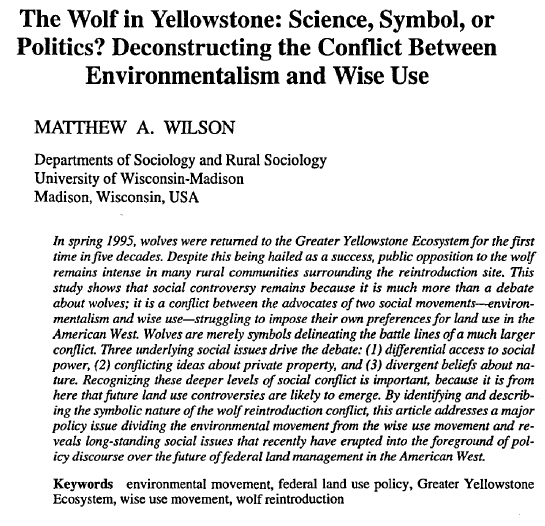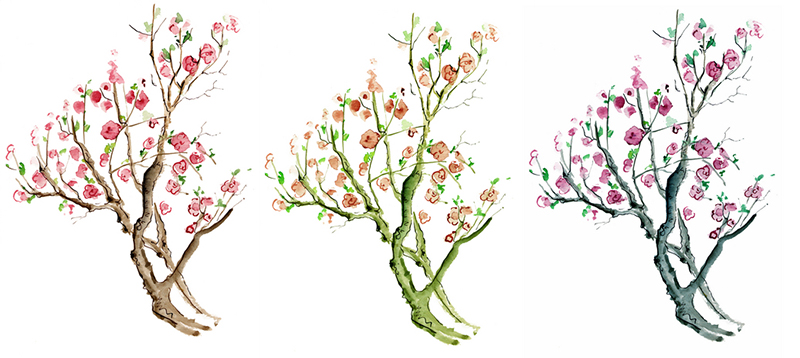It’s also a good case study in the integration of sources and quotes:
Every wolf in Yellowstone therefore is more than just a wolf. Imbued with profound symbolic meaning, each wolf embodies the divergent goals of competing social movements involved in the reintroduction debate. Framed by environmentalists and their wise use opponents as another line in the sand in their ongoing battle for the heart and soul of the West, wolf reintroduction is a high-stakes political conflict. Wolf recovery is often portrayed by environmentalists as being symptomatic of a culture in transition–an inevitable change (Askins, 1995). It is an image that plays especially well with the media: “[T]he wolf issue pits the New West against the Old West” (Johnson, 1994, p. 12), a milestone in the “transformation of power” from the Old West (Brandon, 1995, p.8). Wolf restoration clearly represents change, but sound bites that reduce the social struggle over wolves to an “inevitable” transition from the old to the new are inadequate. They do not explain the underlying social issues driving the transformation. They do not capture the essence of social negotiation, the give-and-take of political exchange between social movements struggling to define the western landscape. Nor do they acknowledge that these social issues will remain after the wolf controversy has exited the center stage of public policy discourse.
Wilson, Matthew. “The Wolf in Yellowstone: Science, Symbol, or Politics? Deconstructing the Conflict between Environmentalism and Wise Use.” Society & Natural Resources. 10(1997): 453-468.

